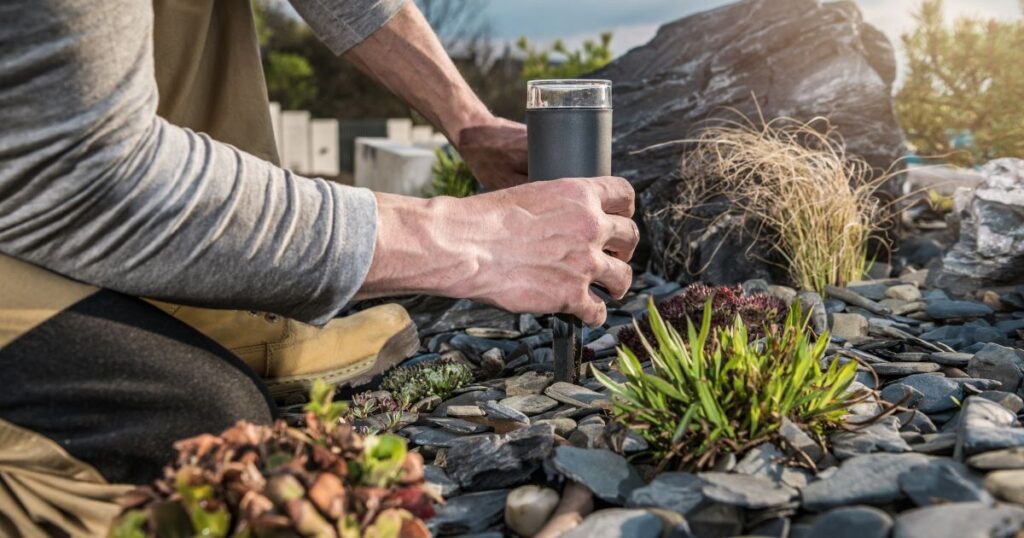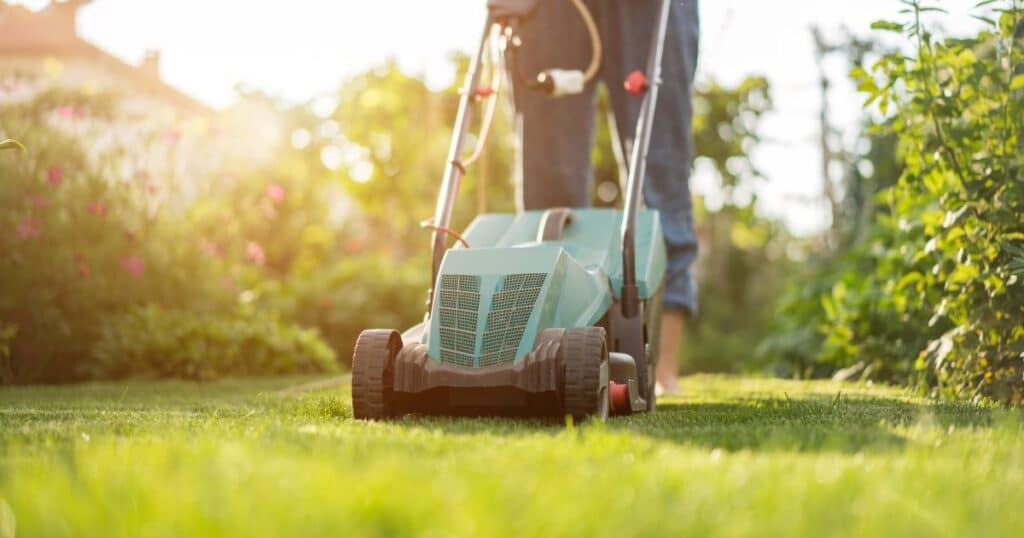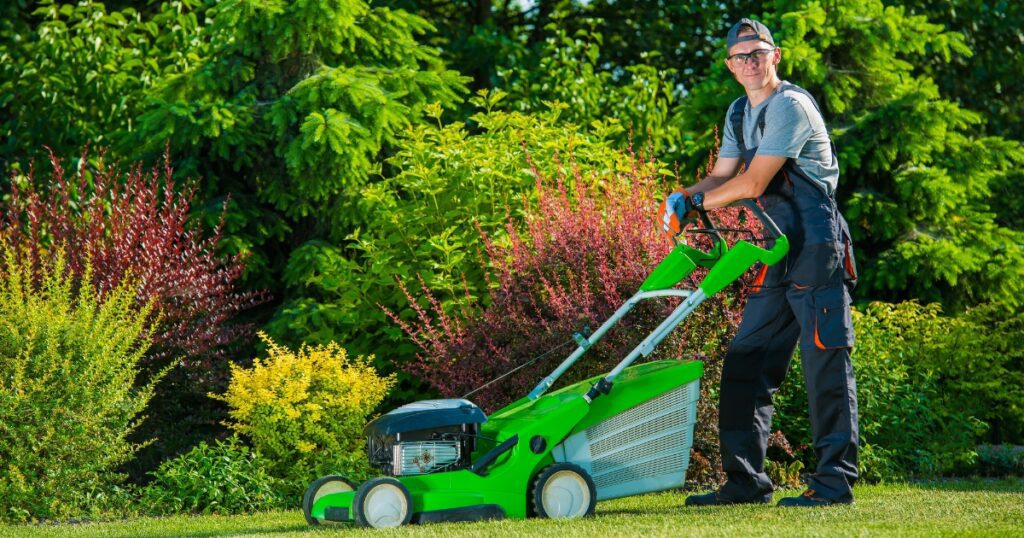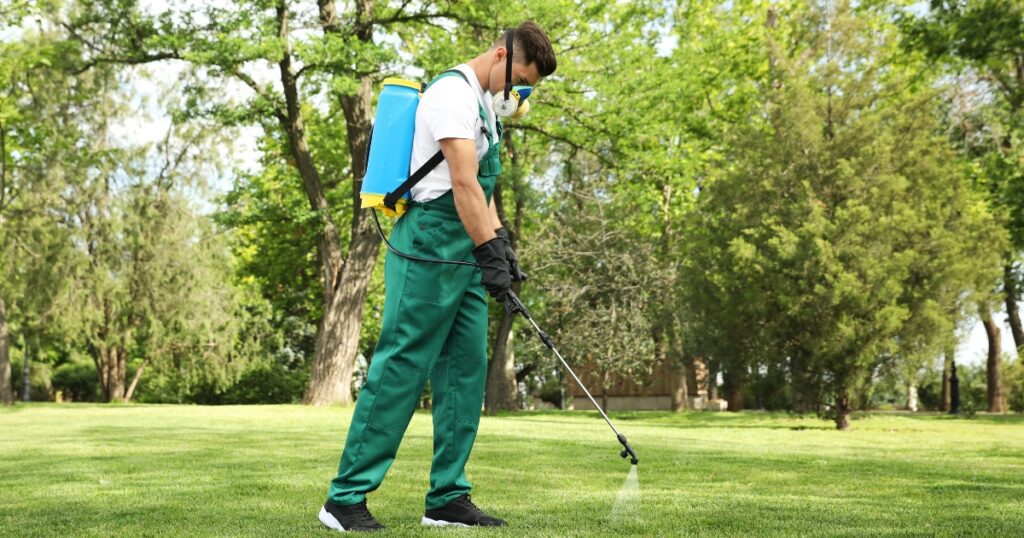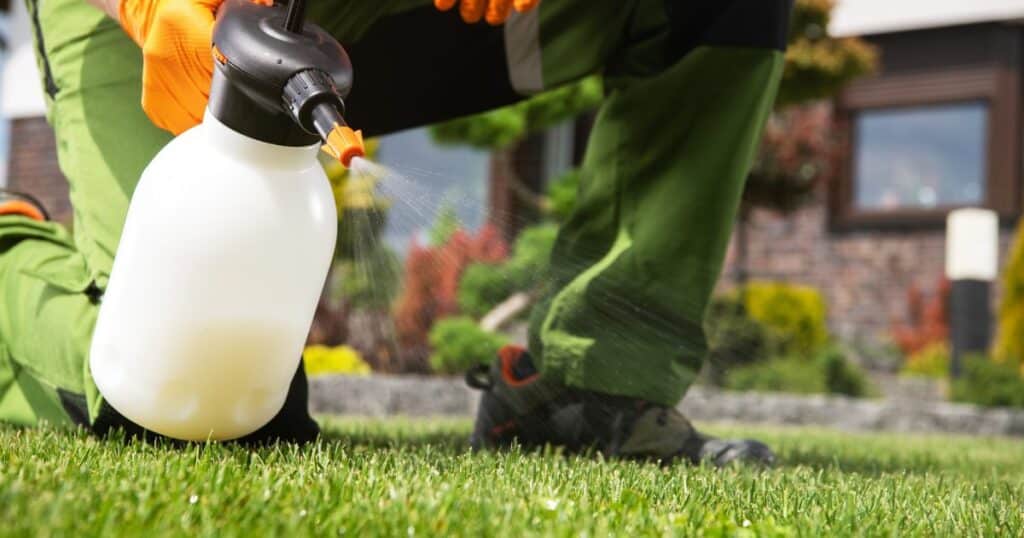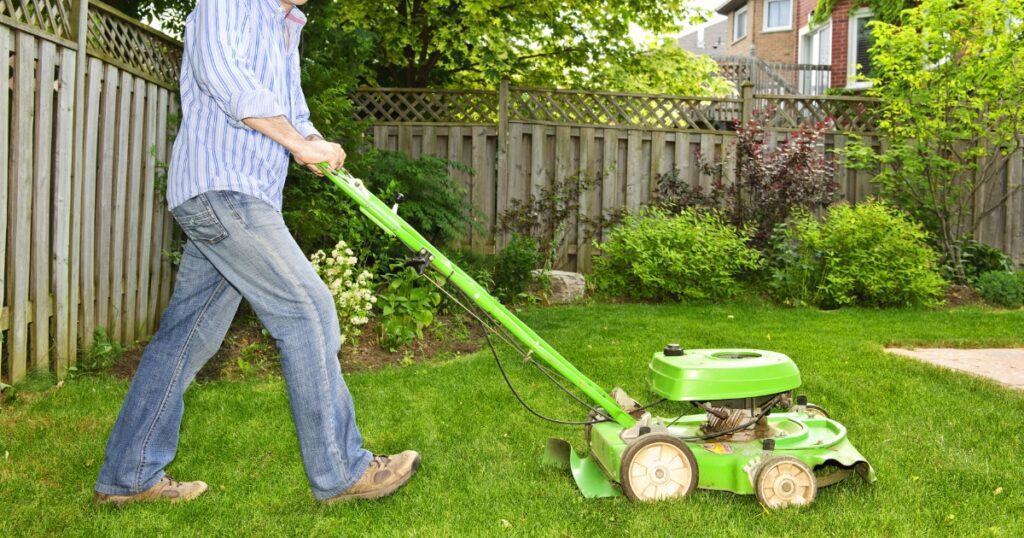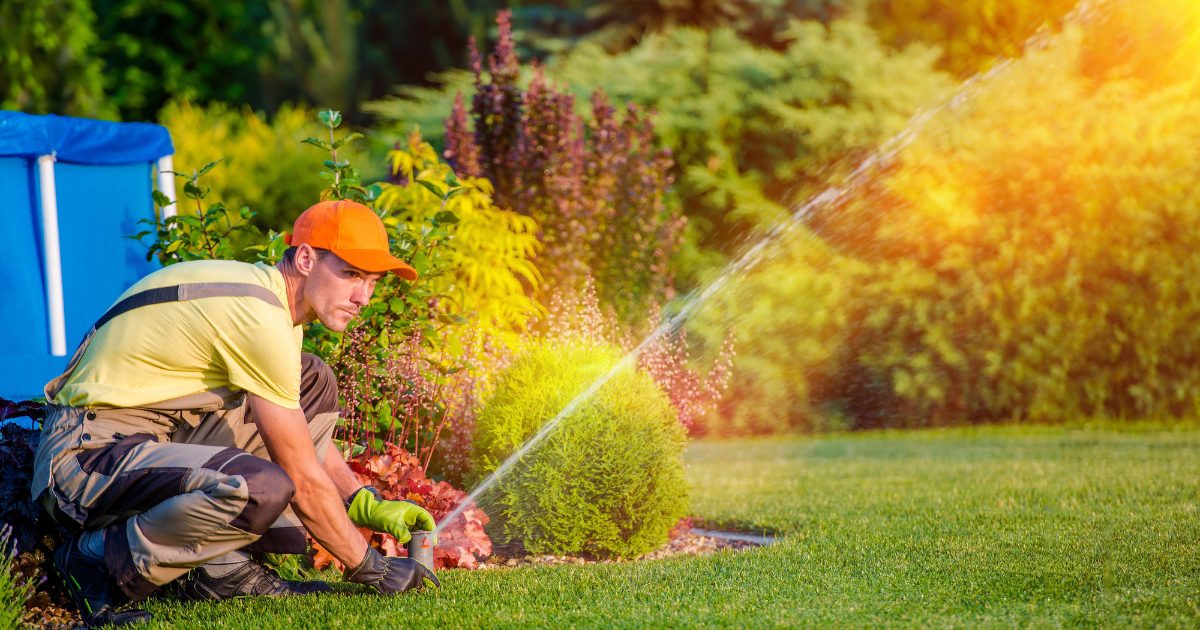
Cultivating a Beautiful Landscape in the Heart of Texas
The Dallas Fort Worth area is known for its warm and sunny climate, making it an ideal location for growing a lush, green lawn. A well-maintained lawn not only enhances the curb appeal of a property but also provides a beautiful outdoor space for relaxation and recreation.
However, achieving and maintaining a beautiful lawn in this region requires careful planning and execution of various tasks that are unique to this region. This is where having a comprehensive lawn care schedule becomes imperative.
RELATED: Green Up Your Dallas Lawn: The Ultimate Lawn Care Calendar for a Lush Landscape
Importance of Lawn Care Schedule Dallas Fort Worth
Lawn care goes beyond just mowing the grass regularly. It encompasses everything from fertilization to pest control to weed management. The soil type, weather patterns, and plant species in this region pose various challenges when it comes to lawn maintenance.
Therefore, it’s essential to have a detailed knowledge of the climatic conditions and soil quality to keep your lawn healthy throughout the year. A well-cared-for landscape not only enhances the beauty of your home but also adds value to your property.
Studies have shown that well-manicured lawns can increase property values by up to 10%. Moreover, lawns act as carbon sinks by absorbing carbon dioxide from the atmosphere, mitigating global warming effects.
Purpose & Scope of Lawn Care Schedule
The primary purpose of developing a comprehensive lawn care schedule is to ensure that every aspect of your landscape maintenance is covered throughout the year systematically. With such schedules in place, homeowners can be confident that their lawns will remain healthy all year round without missing out on any critical maintenance tasks. A good lawn care schedule should cover seasonal tasks such as aerating and seeding during springtime or leaf removal during fall.
It should also include monthly checklists that detail actions required each month concerning watering, fertilization, and pest control measures. Through this article, we aim to provide homeowners with a comprehensive lawn care schedule that will help them maintain a beautiful and healthy landscape in Dallas, Fort Worth.
Seasonal Lawn Care Tasks
Spring: Aeration and Overseeding
Spring is the perfect time to start thinking about lawn care. After a long winter, your grass may be looking a little lackluster and in need of some TLC.
One of the most important tasks to prioritize during this season is aerating and overseeing your lawn. This process helps to loosen compacted soil while also planting new seeds, ensuring that your lawn remains lush and healthy throughout the summer months.
To aerate your lawn, use a core aerator machine which will pull small plugs of soil from the ground. This process creates space for air, water, and nutrients to penetrate deep into the roots of your grass.
Once you have finished aerating, it’s time for overseeding—this means sowing fresh grass seed over any patches of thinning or bare areas of your lawn. Be sure to choose a seed that is well-suited for our Dallas-Fort Worth climate.
Fertilization
Fertilizing your lawn in spring is essential for promoting healthy growth throughout the year. The best time to fertilize depends on what type of grass you have planted in your yard; however, most North Texas lawns will respond well to an application in early spring when temperatures are still mild, but the growing season has started.
When choosing a fertilizer product, look for one with high nitrogen content, as this nutrient helps promote leafy growth. However, be careful not to overdo it when applying fertilizer, as this can lead to burnt patches in extreme cases.
Weed Control
Weeds can quickly take over an otherwise beautiful lawn if left unchecked. Therefore, it’s important to address them early on before they become too much of an issue.
Springtime is prime weed season since many varieties begin popping up once temperatures rise above 60°F. There are a variety of methods for weed control, from manually removing them to using herbicides.
For best results, it’s recommended to use a pre-emergent herbicide before weeds have had a chance to take root. This will prevent the spread of seeds and stop new weeds from sprouting up.
Summer: Watering and Irrigation Maintenance
Summer is when temperatures in Dallas and Fort Worth start to climb, and your lawn will require frequent watering to stay healthy. The best time to water your lawn is in the early morning or late evening when the sun is not as strong. This prevents water evaporation and allows moisture to penetrate deep into the soil.
Additionally, it’s important to keep an eye on your irrigation system during this season. Check regularly for any leaks or broken sprinkler heads, as these can cause water waste and uneven watering patterns that can damage your grass.
Pest Control
Summer is also prime pest season for North Texas lawns. Common pests include grubs, chinch bugs, and armyworms that feed on grass roots, causing patches of brown throughout your lawn. Look out for signs such as wilted patches or yellowing blades of grass.
To prevent pest infestations, consider applying a pesticide early in the summer before they become too prevalent. Some pesticides are available at local home improvement stores, while others may require professional assistance.
Fall: Leaf Removal
As autumn approaches, leaves begin falling from trees and can quickly pile up on your lawn if not removed promptly. While leaves may seem harmless enough, they can block sunlight from reaching the grass below which can lead to yellowing or even death of your turfgrass. To avoid this issue, make sure you rake up fallen leaves frequently throughout the fall season – once every week should be sufficient for most residential lawns – leaving no more than an inch layer over the grass at any given time.
Final Mowing and Trimming Before Winter Dormancy
Before winter sets in, it’s essential to give your lawn one final cut and trim. This will help prevent overgrowth during the dormant winter season when the grass isn’t actively growing.
At this point, you should also consider lowering your mower blades slightly to allow more sunlight to penetrate the soil. This will help your grass store nutrients for the coming winter months before spring returns.
Monthly Lawn Care Checklist
January: Inspect, Prevent, and Check
In January, after the holiday season has wound down, it’s time to take a close look at your lawn and assess any damage caused by winter weather conditions. Look for areas where the grass may have thinned out or even died off completely. If necessary, reseed these areas as soon as possible so that the new grass has plenty of time to take root before the spring growing season begins.
Additionally, apply pre-emergent herbicide to prevent spring weeds from taking hold in your lawn. Check your irrigation system for leaks or damage from freezing temperatures that may have occurred during the winter.
February: Monitor and Plan
As temperatures begin to rise in February, it’s important to continue monitoring your irrigation system for proper function. Make sure that all sprinkler heads are working properly and that water is being distributed evenly across your lawn. This is also a good time to begin planning any spring landscaping projects you may want to tackle once the weather starts warming up.
March: Aerate and Tackle Weeds
In March, it’s time to aerate your lawn in order to promote healthy root growth. Aeration loosens compacted soil and allows water and nutrients easier access to the grassroots.
Once this is done, apply post-emergent herbicide to help tackle any early-season weeds that may be starting to pop up in your yard. This step will ensure a beautiful weed-free landscape when summer arrives.
April: Spring Clean-Up
In April, before summer sets in, there are some last-minute tasks you can perform on your lawn, which include raking up remaining leaves from fall/winter seasons debris, removing dead branches or garden waste, mowing the lawn with a mower blade set higher than usual to allow the grass to grow taller, this will help keep moisture in the soil and prevent dehydration. These tasks, followed by an application of fertilizer, will help prepare your lawn for the summer season and ensure that it stays looking beautiful and healthy.
Frequently Asked Questions
What months to fertilize lawn in Texas?
In Texas, it’s best to fertilize warm-season grasses in the spring and fall and cool-season grasses in the fall and spring. It’s important to follow the recommended fertilization schedule for your specific type of grass and soil conditions.
What is the best schedule for fertilizing lawns?
The best fertilization schedule for your lawn depends on the type of grass and the climate of your area. In general, it’s best to fertilize warm-season grasses in the spring and fall and cool-season grasses in the fall and spring.
How do I get green grass in Texas?
To get green grass in Texas, you can fertilize your lawn with a nitrogen-rich fertilizer, water it regularly and deeply, mow it at the correct height, and control pests and weeds. It’s also important to perform soil testing and amend the soil with nutrients and organic matter if necessary.
What is the best fertilizer for lawns in hot weather?
In hot weather, it’s best to use a slow-release fertilizer that provides the necessary nutrients to your lawn over a longer period of time. Look for a fertilizer with a high nitrogen content and low phosphorus and potassium content.
What month should I stop watering my lawn in Texas?
In Texas, it’s important to continue watering your lawn throughout the year, but the frequency and amount of watering may vary depending on the season and weather conditions. During the fall and winter months, you may be able to reduce the frequency of watering, but it’s still important to water deeply and infrequently.
How often should I treat my lawn for weeds?
The frequency of treating your lawn for weeds depends on the type of weeds and the severity of the infestation. In general, it’s best to apply herbicides when weeds are actively growing and before they have a chance to go to seed. It’s important to follow the manufacturer’s instructions and use caution when applying herbicides to your lawn.
Conclusion
Maintaining a beautiful lawn throughout the year takes time and effort, but it’s well worth it to have a gorgeous outdoor space to enjoy. By following a monthly lawn care checklist, you can stay on top of all the necessary tasks required to keep your lawn healthy and thriving. With proper planning and maintenance, you can create an outdoor area that is not only aesthetically pleasing but functional as well – providing a safe area for playtime with family or friends – right in your own backyard!

